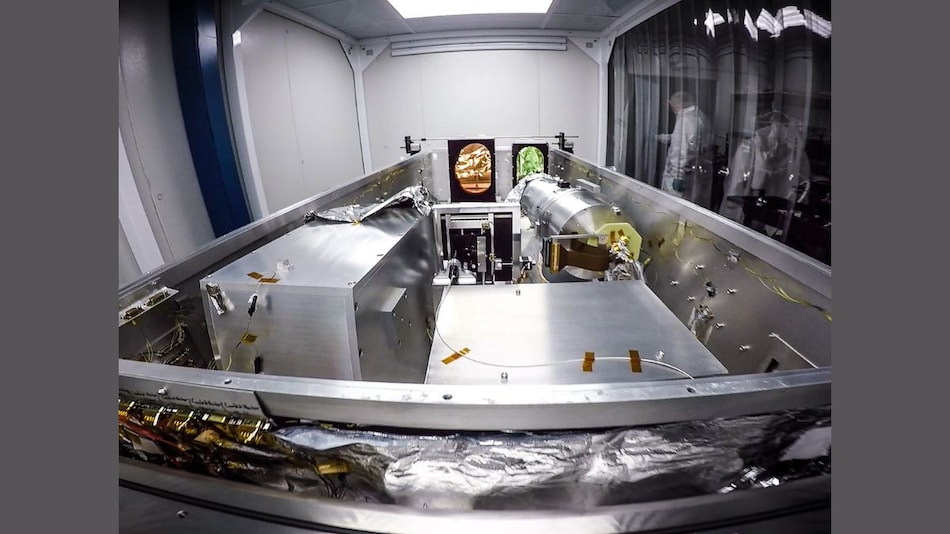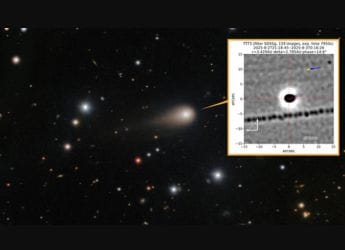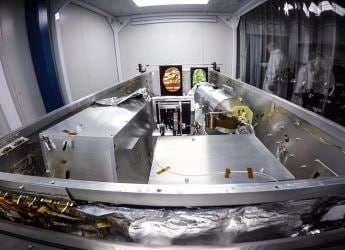- Home
- Science
- Science News
- Newly Found ‘Super Earth’ GJ 251 c Could Be One of the Most Promising Worlds for Alien Life
Newly Found ‘Super-Earth’ GJ 251 c Could Be One of the Most Promising Worlds for Alien Life
Astronomers discovered GJ 251 c, a rocky planet four times Earth’s mass orbiting in its star’s habitable zone.

Photo Credit: Guðmundur Stefánssonn/Penn State
Astronomers find GJ 251 c, a rocky super-Earth in its star’s habitable zone
An international team including Penn State astronomers has discovered a new ‘super-Earth' exoplanet orbiting the nearby star GJ 251. It has a mass approximately four times that of planet Earth, and it is probably rocky, named GJ 251 c. It rotates within the habitable (Goldilocks) zone of their star – the range over which liquid water might exist. This is one of the most promising possible discoveries so far in the quest to determine alien life.
Discovery and Detection
According to the study, GJ 251 c is roughly four times Earth's mass, putting it in the class known as a super-Earth – a planet larger than Earth but smaller than ice giants like Neptune. Astronomers detected it via the radial-velocity (or “wobble”) method. Tiny Doppler shifts in the star's light occur as a planet tugs on the star. By combining 20 years of observations, the team saw a consistent 54-day wobble in GJ 251's light. Crucial to this discovery was the Habitable Zone Planet Finder (HPF) – a high-precision infrared spectrograph on the Hobby-Eberly Telescope – which split the star's light to reveal the planet's gravitational pull.
Search for Life and Future Study
Because GJ 251 c lies in the habitable zone, it could have the right conditions for liquid water on its surface. Studying its atmosphere will require more powerful technology. Future 30-meter-class telescopes are expected to directly image nearby rocky planets and probe their atmospheres. Penn State researchers say GJ 251 c is “one of the best candidates” for detecting an atmospheric signature of life in the coming decade. This discovery shows how ever-better instruments and methods (from space transit surveys to precision wobble measurements) are bringing more Earth-like worlds within reach.
For the latest tech news and reviews, follow Gadgets 360 on X, Facebook, WhatsApp, Threads and Google News. For the latest videos on gadgets and tech, subscribe to our YouTube channel. If you want to know everything about top influencers, follow our in-house Who'sThat360 on Instagram and YouTube.
Related Stories
- Samsung Galaxy Unpacked 2025
- ChatGPT
- Redmi Note 14 Pro+
- iPhone 16
- Apple Vision Pro
- Oneplus 12
- OnePlus Nord CE 3 Lite 5G
- iPhone 13
- Xiaomi 14 Pro
- Oppo Find N3
- Tecno Spark Go (2023)
- Realme V30
- Best Phones Under 25000
- Samsung Galaxy S24 Series
- Cryptocurrency
- iQoo 12
- Samsung Galaxy S24 Ultra
- Giottus
- Samsung Galaxy Z Flip 5
- Apple 'Scary Fast'
- Housefull 5
- GoPro Hero 12 Black Review
- Invincible Season 2
- JioGlass
- HD Ready TV
- Laptop Under 50000
- Smartwatch Under 10000
- Latest Mobile Phones
- Compare Phones
- OnePlus 15
- Redmi K90
- Redmi K90 Pro Max
- Nubia Z80 Ultra
- Realme GT 8
- Realme GT 8 Pro
- iQOO 15
- Red Magic 11 Pro
- MacBook Pro 14-inch (M5, 2025)
- Asus Vivobook S16 (S3607QA)
- iQOO Pad 5e
- OPPO Pad 5
- Garmin Venu X1
- Redmi Watch 6
- Xiaomi TV S Pro Mini LED 2026 (98-Inch)
- Xiaomi Xiaomi TV S Pro Mini LED 55 2026
- Asus ROG Ally
- Nintendo Switch Lite
- Haier 1.6 Ton 5 Star Inverter Split AC (HSU19G-MZAID5BN-INV)
- Haier 1.6 Ton 5 Star Inverter Split AC (HSU19G-MZAIM5BN-INV)

















